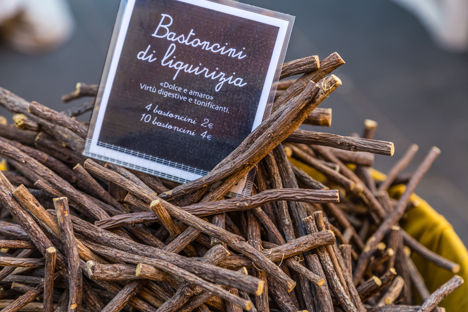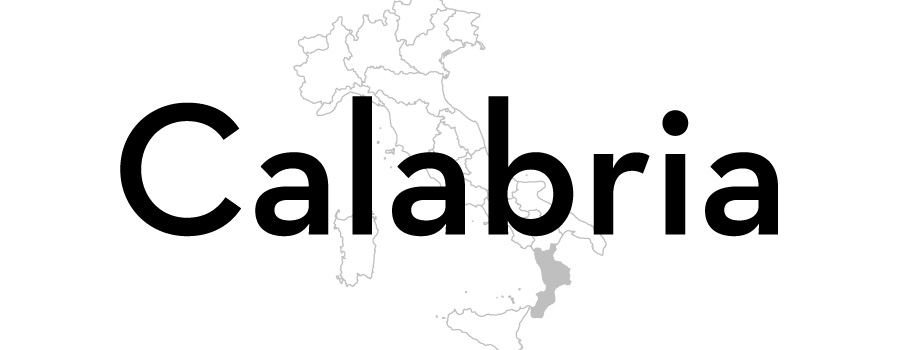
Liquorice: black gold in Calabria
In the height of summer, the bright yellow flowers of liquorice plants cover huge swathes of the Calabrian countryside. Thanks to a combination of fertile soils and unique climate, the region boasts the best liquorice in the world, bar none – read on to discover why.
Liquorice: black gold in Calabria
In the height of summer, the bright yellow flowers of liquorice plants cover huge swathes of the Calabrian countryside. Thanks to a combination of fertile soils and unique climate, the region boasts the best liquorice in the world, bar none – read on to discover why.
Liquorice really divides opinion in the foodie world. In the ‘love it or hate it’ stakes, it’s right up there with Marmite – that distinguishable bittersweet aniseed twang really rubs some people up the wrong way. Ironically though, if you think you don’t like liquorice based on childhood sweets, there’s a good chance you’ve never actually eaten real liquorice. Take liquorice boot-laces for example – most contain a minuscule quantity of liquorice extract, boosted with anise oil to give a recognisable flavour. Some contain absolutely no liquorice at all, with the flavour and texture being synthesised using flour, corn syrup, molasses and artificial flavourings. Real liquorice comes from the root of a herbaceous plant native to southern Europe and Southeast Asia called Glycyrrhiza Glabra, and its distinctive flavour comes from a very specific compound – glycyrrhizic acid – which gives liquorice its unique bittersweet and salty flavour.
Long before some of us ate liquorice for fun, it was widely used as medicine in the ancient world. Liquorice has been a cure for liver disease and food poisoning in Chinese medicine for some 5,000 years now. Alexander the Great gave his troops liquorice to stave off hunger on long marches across Africa and Asia, and there’s plenty of literary evidence from ancient Greece and Rome that liquorice root was prescribed as a cure for coughs. The greek word for liquorice was glukurrhiza, which translates as ‘sweet root’ – hence glycyrrhizic (gli-ser-rye-zic) acid and, eventually, the word liquorice.
Liquorice grows in many parts of Europe and Asia, but it is abundant in Calabria – its yellow flowers spread across the sun-kissed Calabrian countryside like wildfire, attracting a host of bees and other wildlife. Liquorice loves the clay soils in this part of Italy, and because the ground is so mineral-rich, the plants are able to produce large amounts of glycyrrhizic acid. Where other liquorice growers around the world need to supplement the root with additives and sugar, Calabrian liquorice is pure and natural – packed full of distinctive flavour. Simply put, it’s the best liquorice in the world.
Though there are other producers, Amarelli is synonymous with liquorice in Calabria and around the world. The Amarelli family have been in the liquorice business since the sixteenth century – they were the first to industrialise a method of extracting juice from the root and the first to open their own factory in 1731. In the early days the liquorice roots would be ground down by a huge millstone, before being boiled, reduced and worked into bootlaces, marble-shaped sweets and little square pellets called spezzatine. Liquorice was very much valued as a stimulant, and these chewable items would come in iconic red metal cases, designed for labourers and heavy lifters who needed an energy boost during the day. Even soldiers in the army were given tins of spezzatine to sustain them over long marches. The equipment at the Amarelli factory in Rossano is rather more modern today, but the process remains the same – Liquirizia di Calabria has been PDO-protected since 2011, meaning it has to be made via the traditional methods, before being exported all across the world.
As for why Calabrian liquorice remains popular, it all comes back to purity. Because Calabrian liquorice contains high levels of glycyrrhizic acid, it has the purest flavour of any liquorice in the world. On top of that, it boasts remarkable health benefits that the locals swear by. Many of the medicinal uses that go back into antiquity can be traced back to the fact that liquorice is a powerful anti-inflammatory and antioxidant, and has antiviral properties too. Amarelli continues to make liquorice lozenges because people swear by them for treating coughs and sore throats. Supposedly some locals still chew on raw, unprocessed liquorice root and even use it to brush their teeth.
Alongside all the bootlaces and spezzatine, Amarelli also makes plenty of other liquorice-based confectionery. Liquorice and chocolate is a much-loved Calabrian delicacy, and you can buy bars that mix liquorice with both white and dark chocolate, as well as gianduja – a chocolate and hazelnut spread born many miles north in Turin. There are a variety of liquorice liqueurs – including a liquorice grappa that certainly packs a punch – and also beers, liquorice pasta, salt and bathroom products like shampoo and toothpaste.
Despite its quality, Liquirizia di Calabria is still only produced in relatively small quantities, and makes up a tiny percentage of world production. Eighty percent of liquorice sold in the local area is made in Calabria, but head outside the region and that number drops to just five percent. Of the 300,000 tonnes of liquorice root processed in Italy every year, just 7,000 tonnes of that are grown in Italy, which means a whopping 293,000 tonnes are imported from the likes of China, Pakistan and Tunisia. Our advice? Seek it out next time you visit the region and make sure you’re buying the real deal – if you think you don’t like liquorice, you probably just haven’t tried the real thing.



